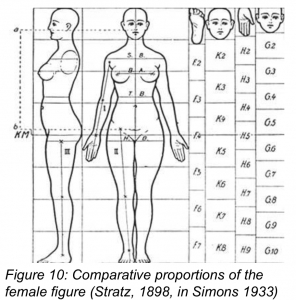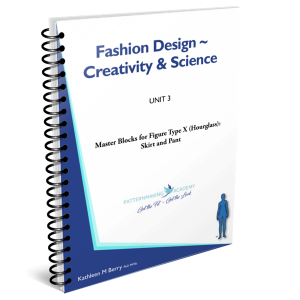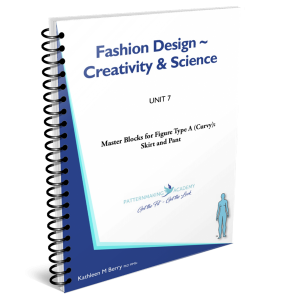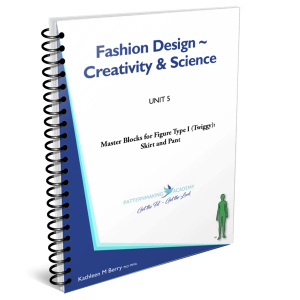Unit 12: Pattern Engineering: Past, Present & Into the Future
$50.00
This unit comprises: Part A and Part B
Unit 12 has been written primarily as a resource to help readers understand past and present systems of pattern making and pattern engineering for female garments, and to be aware of the many possibilities that the future holds for the apparel industry. [146 pages]
(eBook)
Purchase Kindle edition here – https://amzn.to/3HkyCIH
Description
Part A: Artisans to the Digital Explosion
Part A reflects the old and the new, by following the journey of the apparel industry from the early days of the traditional tailors and dressmakers to the present time, as well as delving into what the future may be and how it may evolve.



Where the industry will be in five to ten years’ time remains to be seen, as information about new technology continues to flood the blogosphere almost daily. Only a crystal ball will have the answers. In this regard, emerging digital technologies are given particular attention.
The Explosion of Novel Digital Technologies
Apparel production in the future will be dominated by an impressive array of digital tools as a result of the technological explosion we are now experiencing.

New technologies are creating an enormous challenge, and overcoming the hurdles they present will require: ingenuity; stamina; courage to research and gain insight before deciding on the most suitable platforms, tools and apps to adopt; finance to fund all the components of digital transformation; training to implement the new technologies; willingness to collaborate – a major departure from longstanding fashion tradition; and integrating with the best solutions in the market place at selected stages of the supply chain between design and completion. And finally, at all times – not forgetting that wonderful virtue of patience.
Part B: Covid-19 & Digital Transformation
Part B focuses on the impact of Covid-19 on the apparel industry in a review of the literature that details opinions and predictions about future directions the industry might take. Readers are brought up to date about current issues such as ecological conservation, social responsibility, and future sustainability, and given an overview of many emerging digital technologies including predictions about digital transformation.
 Covid-19 deaths in world regions as at Nov 26, 2020
Covid-19 deaths in world regions as at Nov 26, 2020
Part B: Covid-19
By late December 2019, Covid-19 started to spread across the globe, causing unprecedented disruption.
It became the catalyst for many industries to close permanently, and compelled others to move forward with a new vision for recovery. Supply chains have been severely disrupted; mandatory quarantine has been imposed; and social distancing and other restrictions including self-isolation have been placed on society.
Covid-19 has also prompted a growing consensus that initiatives relating to safeguarding eco-systems, and endorsing sustainability must be given greater priority. Added to this is the need to implement fair wages and safe working conditions in developing countries.
Actions industry stakeholders will need to consider now and into the future include: rebuilding a completely altered supply chain; the feasibility of offshore versus onshore sampling; and implementing different approaches to planning, developing and presenting new collections.
The indications are that Covid-19 will continue to disrupt the apparel industry for some time. Many changes initiated during the pandemic are likely to become permanent, and open up a new era for apparel production.
These and other impacts of Covid-19 shown in the figure presented here, are described comprehensively in Unit 12.

Part B: Digital Transformation
‘Digital transformation’ – put simply, means converting a business’s operations from manual to digital, wherever this is possible. The use of digital technology across all areas of apparel production is advancing rapidly. For pattern makers and pattern engineers this means using computer aided design tools [CAD], and moving to 3D digital technologies, such as 3D body scans for obtaining body measurements, and virtual technologies to generate virtual 3D garments to assess fit and sizing issues, and approve design concepts BEFORE production begins!
Other emerging technologies and the opportunities they present for future fashion careers are also outlined in Part B, Unit 12. These include useful commentary by industry specialists and suggestions about the need for new types of skills, and training.






